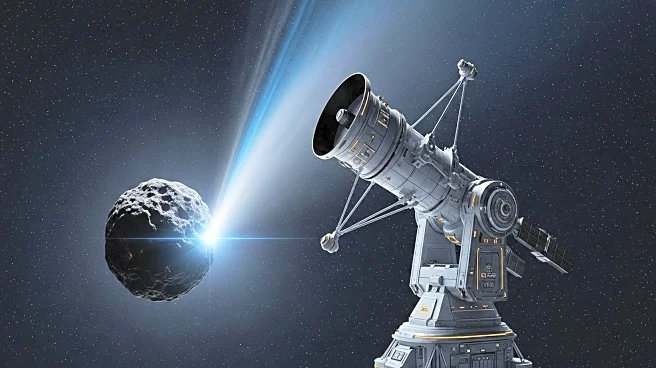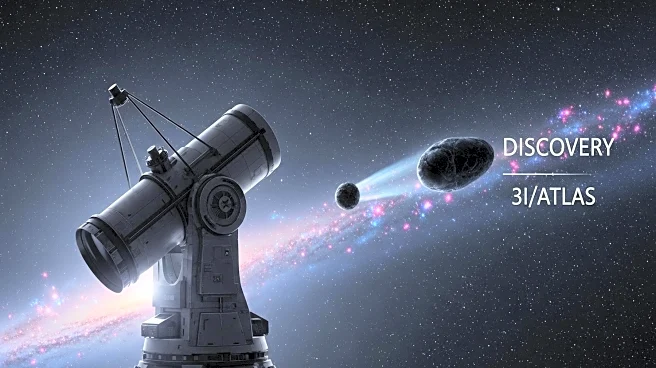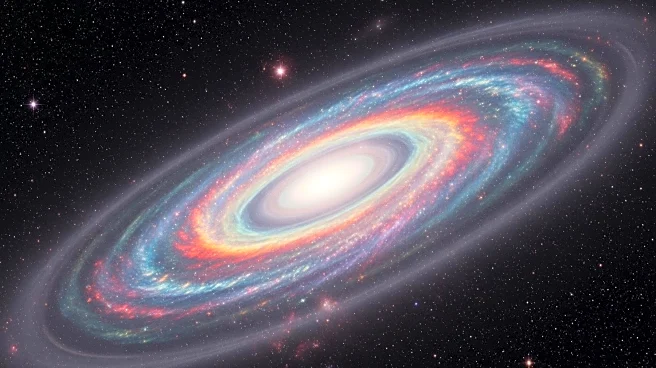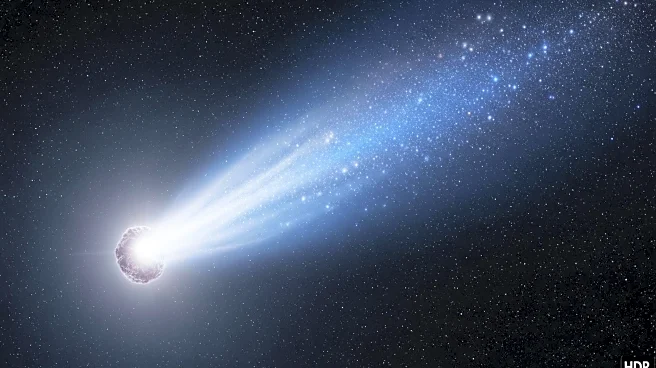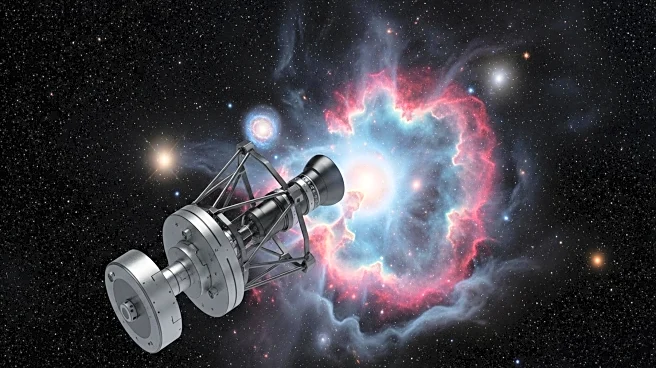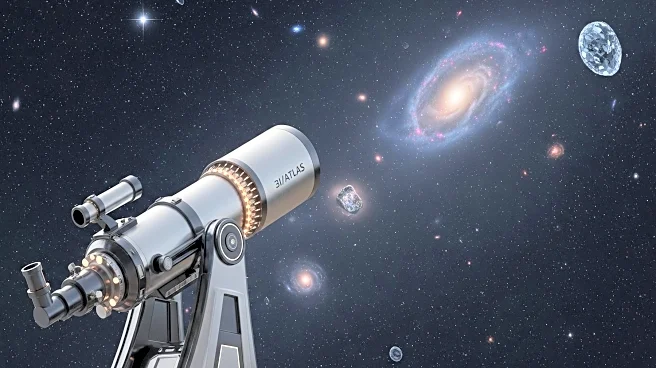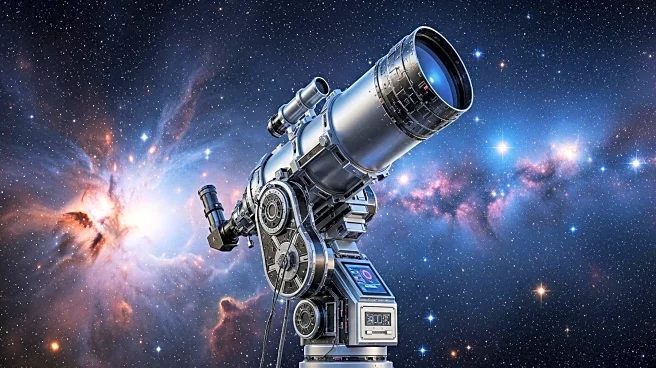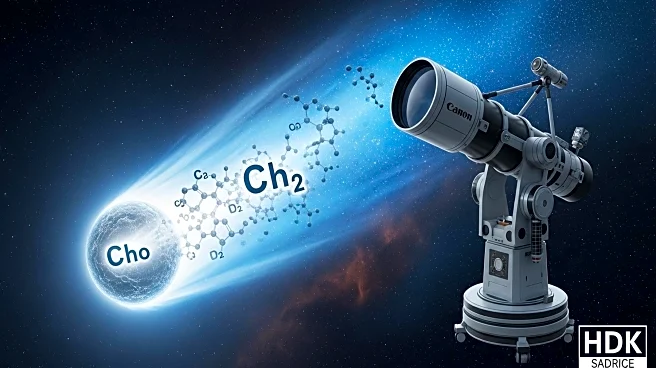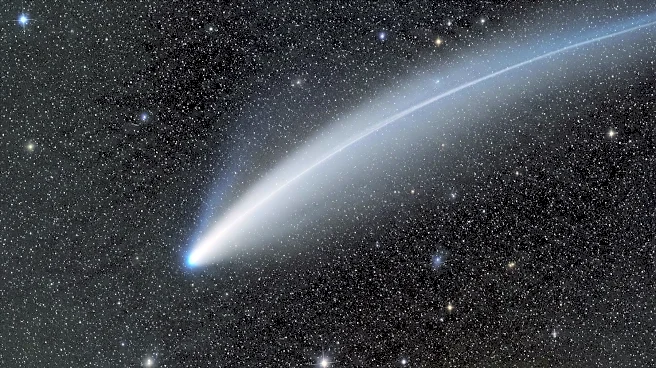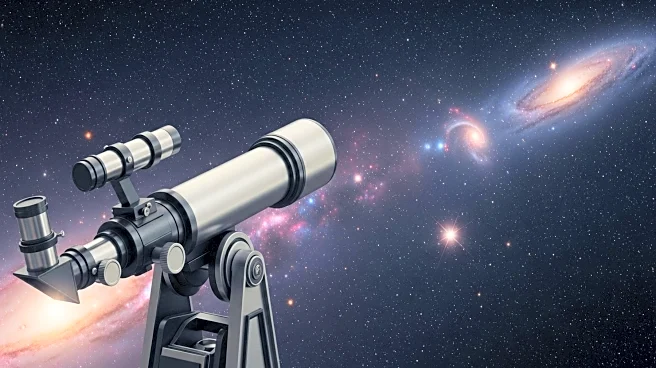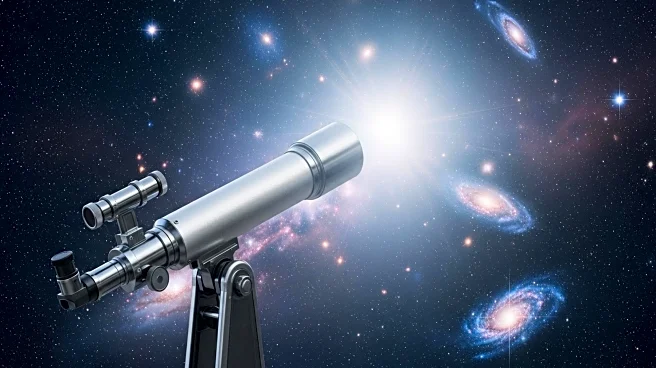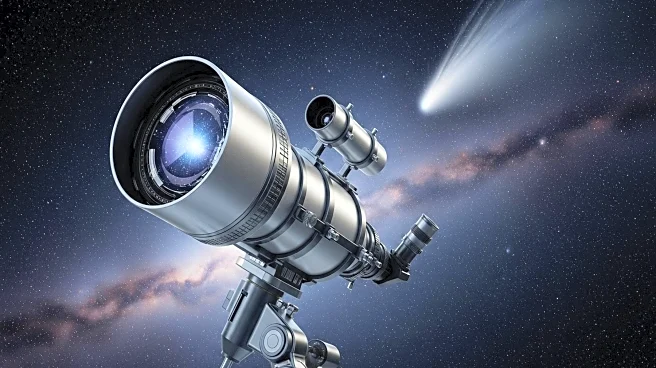What is the story about?
What's Happening?
The James Webb Space Telescope (JWST) has made a significant discovery regarding the interstellar object 3I/ATLAS, revealing that its coma is predominantly composed of carbon dioxide. This finding was detailed in a recent paper by Martin Cordiner from NASA's Goddard Space Flight Center and the Catholic University of America. The study highlights that the ratio of carbon dioxide to water in the coma is 8:1, which is notably higher than any previously observed comet. This discovery was made using JWST's NIRSpec infrared camera, which observed the comet when it was 3.32 astronomical units from the sun. The presence of other elements such as water, carbon monoxide, and carbonyl sulfide was also confirmed, although the carbon monoxide to water ratio was consistent with past observations. The unusual composition of 3I/ATLAS's coma may be attributed to its formation in a region with high ultraviolet radiation or beyond the CO2 ice line, where carbon dioxide is more prevalent.
Why It's Important?
This discovery is crucial for understanding the composition and formation of interstellar objects, which can provide insights into the conditions of their origin systems. The high carbon dioxide levels in 3I/ATLAS's coma suggest unique formation conditions, potentially offering clues about the chemical processes in other star systems. This information is valuable for astronomers and researchers studying the evolution of comets and the solar system. The findings also underscore the capabilities of the JWST in advancing our knowledge of space phenomena. As only the third confirmed interstellar visitor, 3I/ATLAS presents a rare opportunity to study materials from outside our solar system, which could have implications for theories about the distribution of organic compounds and the potential for life elsewhere in the universe.
What's Next?
Further observations of 3I/ATLAS are planned as it approaches its perihelion in October. These observations will help scientists gather more data on its composition and behavior as it interacts with solar radiation. The comet will become visible again in December, providing another opportunity for study before it exits the solar system. Researchers are keen to compare these findings with data from other interstellar objects, such as 2I/Borisov, to better understand the diversity and characteristics of such visitors. Continued monitoring and analysis will likely yield additional insights into the nature of interstellar comets and their role in the broader cosmic environment.
AI Generated Content
Do you find this article useful?
